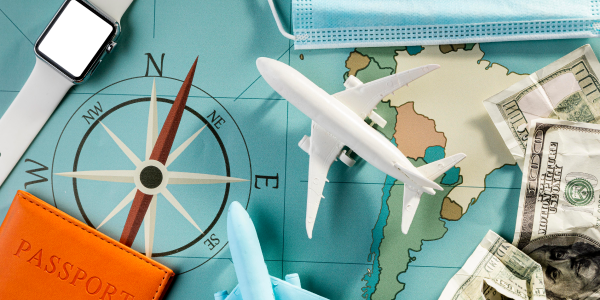
How to Plan a Cross-Country Road-Trip
It doesn't have to be a hassle to move across the country! In actuality, it's simpler than you might imagine transforming a cross-country road trip.
The United States is home to a large number of beautiful cities that offer extensive expenses of breathtaking scenery, historical sites, and fantastic shopping and dining options. Moving across the country provides the ideal opportunity to see some of these places, relatives, and friends, and to make the most of the hundreds or even thousands of miles that you will be driving.
It's time to start preparing and packing cross-country road trip essentials. Here are our suggestions for making an interstate move into an enjoyable road trip.
Determine the Length of Your Trip
Decide how long you want your cross-country road trip to last, then stick to it. This will determine how many stops you can make and how long you can stay at each one. The voyage could theoretically be finished in less than two days if you drove nonstop, but where's the fun in that? (Not to mention the negative effects of sleep deprivation.) In our opinion, a journey should last at least two weeks to be pleasurable, but three to five weeks is ideal.
Map Your Route
Now that you've chosen your important stops, it's time to locate them on a map and draw out your itinerary. A digital map, such as Google Maps, is considerably simpler to use than a paper one. It's wonderful to have a visual depiction of your route that is simple to alter as you figure out the stops in between. Every time try your best to choose the best cross-country driving route.

Make Packing List
To avoid tension closer to departure, make your packing list well in advance. Depending on the type of vacation you're taking, there are many cross-country road trip essentials you'll need to pack. For instance, you must bring all of your necessary camping equipment if you intend to camp along the entire best cross country driving route. On your cross-country road trip, if you're living in a van, you'll want to maximize storage with tools like packing cubes (and don't forget shoe cubes and compression kits!).

Take the Scenic Route if You Aren't in a Hurry
There are a few alternative routes you can take for some road trips: the one that gets you there the quickest and the one that allows you to see the sights. Together, select the route you want to take and how much time you want to spend driving overall as you examine your options.
Find Landmarks You Want to Visit Along the Way
Look up the primary draws of the locations you are staying at, such as museums, works of art, national parks, and historic sites, national highways. Make sure you purchase the necessary advance tickets before leaving on your vacation to ensure that you may enter the location to view the sights.

Pinpoint a Variety of Restaurants Along Your Route
It can get a little boring to eat fast food. Find some well-regarded eateries close to where you'll be staying if you want to get a true sense of the region's culinary diversity.
Create a Realistic Budget Cross-country
Don't let worrying about money or running out of it ruin your vacation. That calls for some preliminary work. Be aware of the cross-country road trip cost of your lodging as well as the entrance fees to the attractions you intend to visit. Calculate your driving distance using online maps, then estimate your petrol costs (adding one or two extra tanks for getting lost or opting to detour from your intended route). Don't forget to include the cost of any toll roads you anticipate using, Use national highways to avoid this cost. It can be a little more difficult to estimate food expenditures. Prior to your trip, choose which meals you'll have in restaurants and then establish a budget.

Stay Safe With a First Aid Kit
On the road, accidents might happen; therefore, it's better to be over-prepared than under-prepared. In case you require a bandage, some painkillers, or some gauze, grab a tiny first aid kit and keep it in your glove box. First aid kits are typically sold at large department stores.
Keep Your Insurance And Registration in the Car
Keep the details of your car close to hand, just as you would when driving normally. Although you probably won't need it, it's against the law to skip out on it or increase the cross-country road trip cost.
Get a Cooler Full of Food to Cut Down on Costs
If you're on a tight budget, think about carrying a big cooler and filling it up with goodies before you leave. In this manner, you can avoid eating out frequently by purchasing food at the grocery store. All you need to keep your meal cool is a couple of bags of ice.
Pack Your Chargers For Any Devices
If you're driving with young children, you might have a tablet or phone with movies and games on it. So that you don't find yourself on the road with a dead gadget, be sure to include the essential charging cord.
